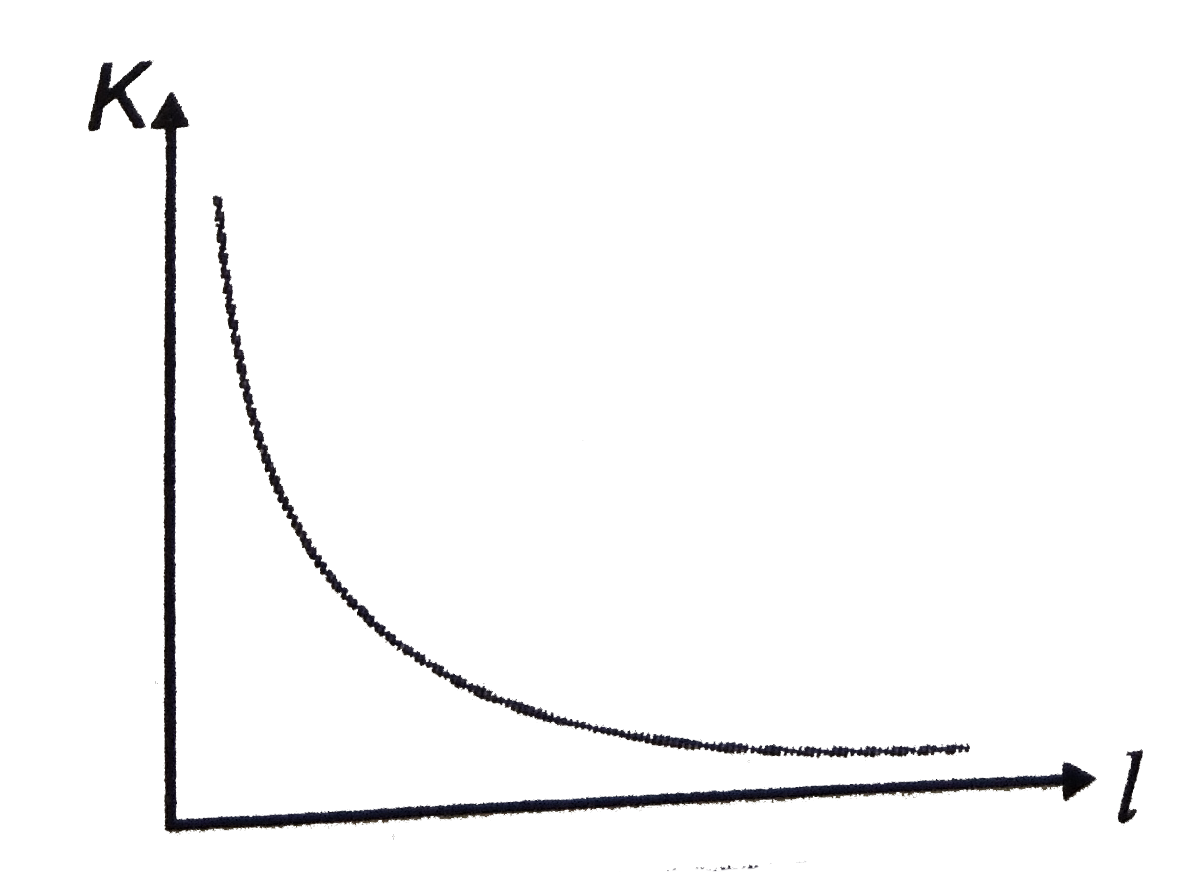In a potentiometer experiment, if the area of cross-section of the wire increases uniformly from one end to another, draw a graph showing how potential gradient would vary as the length of the wire increases from one end.
Potential gradient,
K=Vl=IRl=Il=ρlA=IρA
or K∝1A
Thus the variaton of K versus l when A increases from one end to another is of the type.

Topper's Solved these Questions
- BOOK - PRADEEPCHAPTER - CURRENT ELECTRICITYEXERCISE - Conceptual Problems3videos
CURRENT ELECTRICITY
- BOOK - PRADEEPCHAPTER - CURRENT ELECTRICITYEXERCISE - Very short Q/A7videos
CURRENT ELECTRICITY
- BOOK - PRADEEPCHAPTER - COMMUNICATION SYSTEMSEXERCISE - MODEL TEST PAPER-29videos
COMMUNICATION SYSTEMS
- BOOK - PRADEEPCHAPTER - DUAL NATURE OF RADIATION AND MATTEREXERCISE - Exercise191videos
DUAL NATURE OF RADIATION AND MATTER
Similar Questions
The mass of an uniform ladder of length l increases uniformly from one end A to the other end B,
find the position of the centre of mass from end A.View SolutionA wire whose cross-sectional area is incereasing linearly from its one end to the other, is connected across a battery of V volts. Which of the following quantities remain constant in the wire ?
View Solution
Knowledge Check
- Question 1 - Select One
If the resistivity of a potentiometer wire be ρ and area of cross-section be A , then what will be potential gradient along the wire
AIABlA/pCIp/ADIAp - Question 2 - Select One
The specific resistance and area of cross section of the potentiometer wire are ρ' and A respectively. If a current i passes through the wire, its potential gradient will be
AIρABIAρCIAρDIAρ - Question 3 - Select One
If the radius of a potentiometer wire is increased four times, keeping its length constant, then the value of its potential gradient will become
AhalfBtwo timesCfour timesDconstant
If the diameter of the cross-section of a wire is decreased by 5%,how much percent will the length increased if volume remains the same.
View SolutionIf the diameter of cross-section of a wire is decreased by 5% how much percent will the length be increased so that the volume remains the same?
View SolutionIf the resistivity of a potentiometer wire be ρ and area of cross-section be A , then what will be potential gradient along the wire
View SolutionThe specific resistance and area of cross section of the potentiometer wire are ρ' and A respectively. If a current i passes through the wire, its potential gradient will be
View SolutionAs is the cross sectional area and ρ is the specific resistance of a potentiometer wire. If I is the current passing through the potentiometer wire, then the potential gradient along the length of the wire is given by
View Solution

